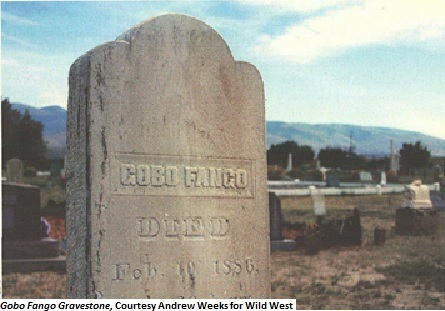Dublin Core
Title
Description
Gobo Fango, an enslaved boy from southern Africa, journeyed to Utah in 1861.
Born about 1855 near the Cape of Good Hope in what is now the Republic of South Africa, Gobo Fango was shaped by hardship.
While still a small child, Gobo Fango’s mother – displaced by constant war and bitter famine – allowed him to be indentured to a white South African family called the Talbots. Missionaries converted the Talbot Family to Mormonism and soon they were making preparations to join other church members in Utah. When the Talbots finally set sail for the United States, Gobo Fango was forced to accompany them, due to his indentured status.
Arriving just as the Civil War broke out in 1861, a crowd tried to liberate him in Chicago, but to no avail. Thus, when the Talbots at last reached Utah and settled in Kaysville, Gobo Fango was still a slave. There is evidence that he remained so, even after the Thirteenth Amendment to the Constitution permanently abolished all forms of involuntary servitude across the United States in 1865.
Fango lived in a shed behind the Talbot house, and worked for the family into his teens, when he was sold to the neighboring Whitesides Family. Fango eventually moved from Kaysville to Grantsville in Tooele County, where he built up his own flock of sheep. But he did not go freely. The husband of one of the Whitesides daughters had purchased him from the Davis County branch of the family.
By the 1880s, Fango had moved to Idaho in order to run sheep in the Goose Creek Valley. Tensions between cattlemen and sheepmen were running high at the time, and Fango was killed in a dispute over grazing rights. The cattleman charged with his murder was twice acquitted of the crime. Fango’s grave in the Oakley, Idaho, cemetery is marked by a simple inscription: “Gobo Fango, died February 10, 1886, 30 years old.”
Creator
Brandon Johnson for the Utah Humanities © 2014
Source
Image: Gobo Fango Gravesite. Fango rests in the Oakley (Idaho) Cemetery. Courtesy of Andrew Weeks for Wild West.
_______________
See H. Dean Garrett, “The Controversial Death of Gobo Fango” in Stanford J. Layton, ed., Utah’s Lawless Fringe: Stories of True Crime (Salt Lake City: Signature Books, 2001), pages 52-62, excerpt available http://signaturebooks.com/2010/08/the-controversial-death-of-gobo-fango/; Salt Lake Tribune, 3 April 1887, page 3; and Deseret News, 3 March 1886, page 14.
Publisher
The Beehive Archive is a production of Utah Humanities. Find sources and the whole collection of past episodes at www.utahhumanities.org
Date
2014-07-04

